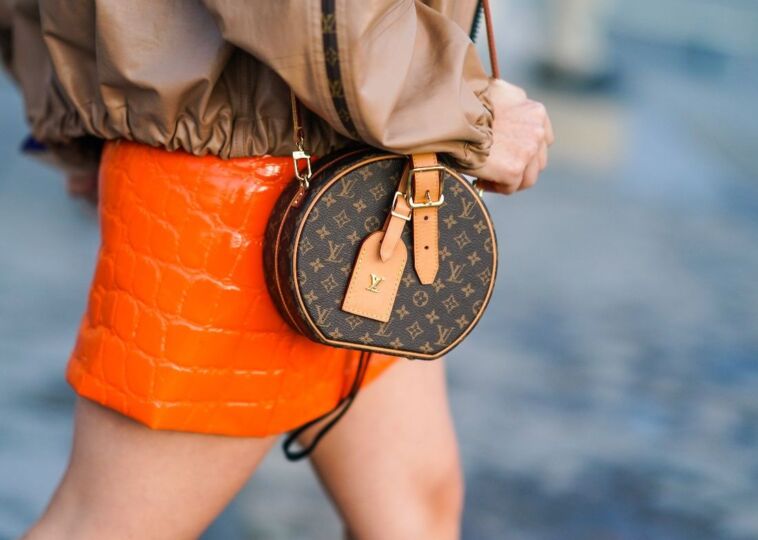Real or Fake? 5 Clever Ways to Spot A Counterfeit Bag

Contents [hide]
The internet has revolutionized the way we shop for luxury items. While it’s never been easier to find that designer bag you’ve been eyeing, ensuring you’re getting the genuine article has also never been more challenging. Scams abound, and the line between an authentic luxury bag and a high-quality counterfeit can be skinny.
So, how do you separate the genuine treasures from the clever fakes?
Examine the Craftsmanship

Authentic luxury bags are masterpieces of meticulous artistry, and one of the most telling signs of a genuine item is the quality of its stitching. Start by inspecting the stitching closely. Authentic designer bags boast impeccable stitching, tight, even, and symmetrical.
This precision is a hallmark of luxury, reflecting the brand’s commitment to quality and the high standards upheld during manufacturing. In contrast, counterfeit bags often display stitching that is irregular and inconsistent. Counterfeits usually cut corners to reduce costs, and sloppy stitching is one of the easiest ways to spot a fake.
Authentic designer bags have edges that are smooth and polished. Fake bags, on the other hand, may have rough or uneven edges. These imperfections indicate that the bag was produced with less skill and lower-quality materials, which starkly contrasts the sleek, flawless edges of a genuine luxury item.
Investigate the Material

High-end designer bags are renowned for using premium materials, and discerning buyers can spot the difference between genuine luxury and a well-crafted imitation. The first step in assessing a bag’s material is to feel it. Luxury bags are made from high-quality leather, fine suede, or premium fabrics.
Genuine leather should feel smooth and supple, with a luxurious weight that feels substantial in your hands. Leather that’s too rigid can indicate a synthetic material or poorly made fake, while leather that’s too soft could suggest a lower-quality product. Authentic designer bags have materials that are consistent in texture and color.
Genuine leather Counterfeits, however, might show noticeable inconsistencies, such as uneven grain patterns or color scars, which can indicate the use of lower-quality synthetic materials. The same rules apply to fabric bags like canvas, tweed, or silk. For example, designer canvas bags often have a tightly woven structure that feels sturdy and smooth.
Study the Brand’s Logo and Tags

Here’s how to ensure that the logo and tags on your bag are authentic. The brand logo is one of the most recognizable features of a designer bag, and authentic brands take great care in its design and placement.
Counterfeit bags might have misspelled names or use incorrect fonts that don’t match the brand’s official logo. Check if it’s centered, appropriately aligned, and positioned per the brand’s standards. Authentic designer bags come with detailed tags that provide valuable information about the product. These tags often include specific language or details that counterfeiters might overlook.
Look for tags that mention high-quality materials and the country of origin that aligns with the brand’s manufacturing locations. These instructions are not just practical but also a part of the brand’s commitment to quality. To verify authenticity, check the format of the serial number against the brand’s known patterns.
Buy From Reputable Sources

Established stores and flagship boutiques have a reputation to uphold and typically only offer genuine products. When shopping in-store, don’t hesitate to ask questions about the bag’s authenticity and any guarantees they offer. Buying directly from the brand’s official website or physical stores is one of the safest ways to ensure authenticity.
Brands like Gucci, Louis Vuitton, and Chanel offer their products through their channels, eliminating the risk of counterfeits. Their websites provide detailed product information and often include features like live chat for customer support. If you prefer online shopping, choose websites with a strong reputation.
Look for retailers with extensive positive reviews, a transparent return policy, and detailed product descriptions. Websites like Net-a-Porter, Farfetch, and Saks Fifth Avenue are known for their authenticity and customer service. Avoid online stores with vague or ambiguous return policies.
Know Your Brand

Understanding these nuances can be your best defense against counterfeit bags. Authentic Louis Vuitton bags will have consistent and precise monogram placement with perfectly aligned patterns. Another critical feature of Louis Vuitton bags is their pattern alignment.
Pay attention to the craftsmanship around the monogram; authentic bags will have clean, uninterrupted patterns, while fakes may show misalignment or poor print quality. Chanel bags are celebrated for their timeless elegance, often defined by quilted leather and distinctive chain straps. The quilting on a genuine Chanel bag is typically even and puffy, with a consistent diamond pattern.
Authentic Chanel chains are made from high-quality metals and are intricately woven with leather. Gucci’s bags are known for their unique patterns and details, such as the GG logo and red-green-red stripes. Fake Gucci bags often have blurred or uneven GG patterns. Additionally, Gucci bags usually feature the brand’s signature striped webbing.


